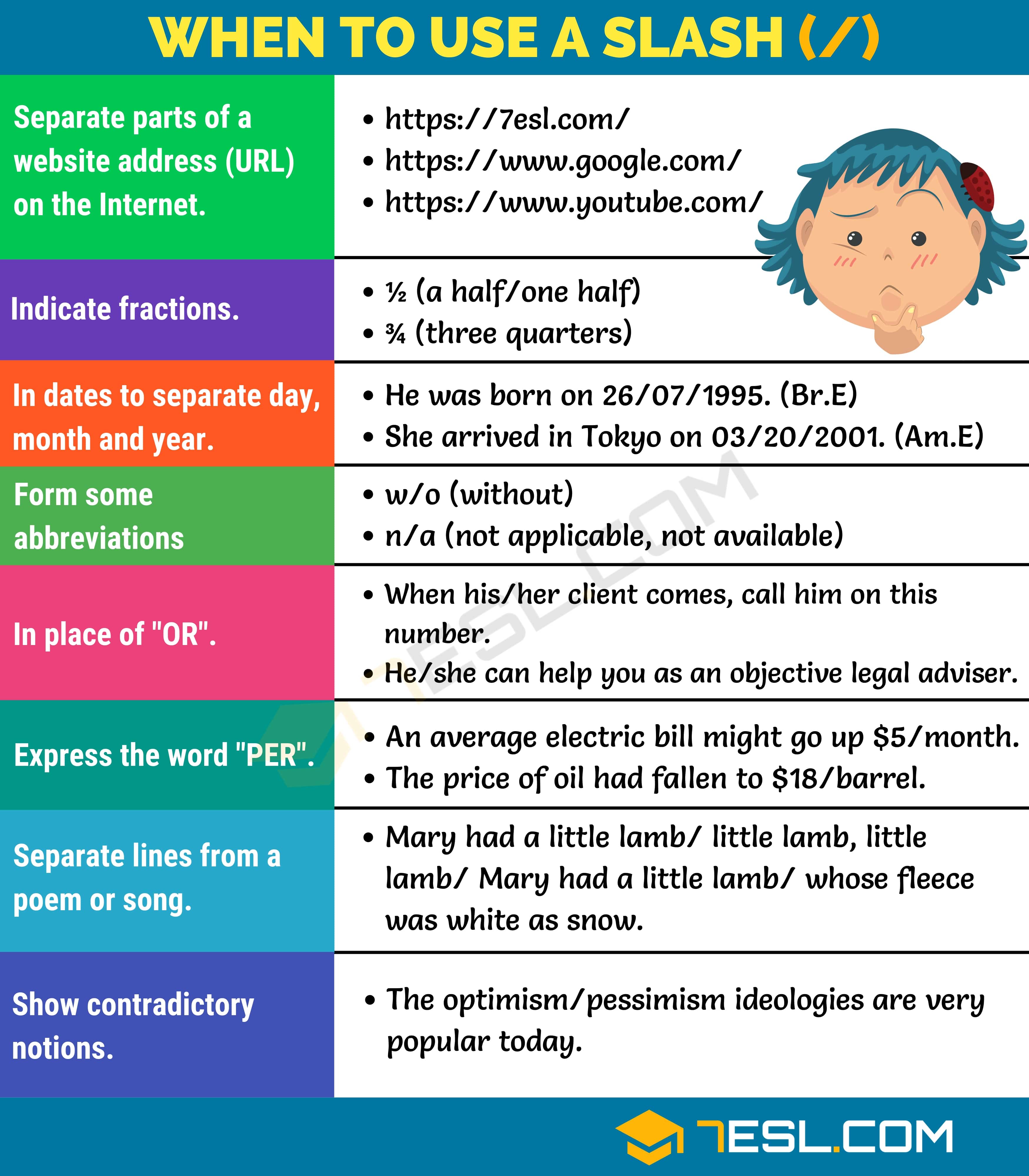Contents
Learning the difference between a backslash (\) and a forward slash (/) can boost your writing skills. This reference covers when to use each type, the specific punctuation rules, and provides examples with easy-to-understand images. Your writing will be clearer and more accurate with these tips.
Backslash vs. Forward Slash

The symbol (\) is called a backslash, while (/) is called a forward slash, which is also known as a virgule, a stroke or even an oblique dash. Thus there are two types of slashes in the English language: a backslash (\) and a forward slash (/).
The backslash (\) is a typographical mark used merely for computer coding and file names. It is not a form of punctuation mark in English. We often use the backslash to separate computer folder names, especially in Windows systems.
The backslash (\) Examples:
- C:\Program Files
- D:\OFFICE\OFFICE 2010
The forward slash (/), often simply referred to as a slash (which is also known as a stroke, a virgule, or even an oblique dash), is a punctuation mark used in English. The slash can be used to separate lines in a song or poem when they are written in a continuous line. This punctuation mark is also used in place of the word or. It can also be used to show two contradictory notions.
When to Use a Slash (/)
1. We use slashes to separate parts of a website address (URL) on the Internet.
Examples:
- https://7esl.com/
- https://www.google.com/
2. We use the slash to form abbreviations.
Examples:
- w/o (without)
- w/ (with)
- b/4 (before)
- b/c (because)
- j/k (just kidding)
- s/t (something)
- n/a (not applicable, not available)
3. We use slashes in dates to separate day, month and year.
Examples:
- He was born on 26/07/1995. (British English)
- She arrived in Tokyo on 03/20/2001. (American English)
4. We use slashes to indicate fractions.
Examples:
- ½ (a half/ one half)
- ¾ (three quarters)
- 1½ (one and a half)
5. We use the slash to indicate the word “OR”
Examples:
- When his/her client comes, call him on this number.
- The director is allowed to designate his/ her successor.
- He/ she can help you as an objective legal adviser.
6. We use the slash to express the word “PER”.
Examples:
- He clocked up 180 km/h on the straight in that car.
- An average electric bill might go up $4/month.
- The price of oil had fallen to $18/barrel.
7. We use the slash to separate lines from a poem or song.
Example:
- Mary had a little lamb/ little lamb, little lamb/ Mary had a little lamb/ whose fleece was white as snow.
8. We use the slash to show contradictory notions.
Example:
- The optimism/pessimism ideologies are very popular today.
- Active vs. Passive Voice Exercises – Active vs. Passive Voice Worksheet - December 25, 2023
- Phrase Exercises – Phrase Worksheet - December 23, 2023
- Sentence Exercises – Sentence Worksheet - December 23, 2023



Can you please answer this question? Should I put a space between a slash and the following word? For example:
Your gifts/your talents are worth sharing!
versus
Your gifts/ your talents are worth sharing!
Can you please explain which of these is the proper use of the forward slash, if any, and if it matters if I put a space in between?
If the slash divides two words, there is no space needed. For example, “and/or” is written without a space.
When using slashes to signify alternatives between phrases or multi-word terms or compounds, a space before and after the slash makes text easier to read. Therefore, in your example, “Your gifts/your talents are worth sharing!” and “Your gifts/ your talents are worth sharing!” are both acceptable, but the latter may be easier to read.
This is extremely helpful information! Thank you.
What is the area of a pacinivic in regard to slash
On deposit of such amount, she will
become entitled to internship/stipend
immediately and in which event, she will also
be entitled to the arrears.
What does this / means here could anyone please explain me the above sentence?
” 5. We use the slash to indicate the word “OR” ”
As stated above, the slash can indicate OR. So your sentence can also be written as;
“On deposit of such amount, she will become entitled to internship ‘OR’ stipend immediately and in which event, she will also be entitled to the arrears.”
In the given sentence, the forward slash (/) is used to indicate that “internship” and “stipend” are two separate but related things. It means that upon depositing the specified amount, the person will become entitled to both the internship and the stipend immediately. Additionally, if there are any arrears (unpaid amounts from previous stipends), the person will also be entitled to receive them.
The forward slash (/) in the sentence is used to indicate that “internship” and “stipend” are two separate things. So, the sentence means that once the person makes the required deposit, they will become entitled to an internship and a stipend immediately. Additionally, if there are any unpaid amounts owed to them, they will also be entitled to receive those payments. I hope that helps clarify things for you!
Never trust an Operating System witch forces you to use BACKslashes.
Where we’re is forward …
Hu
thanks so much